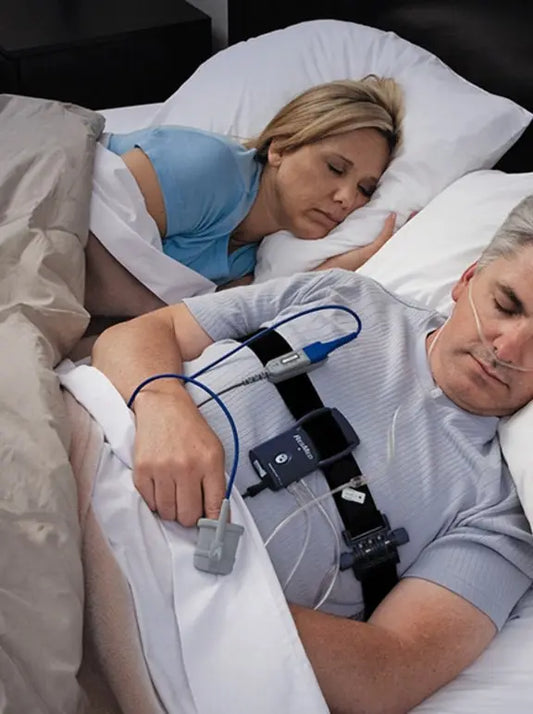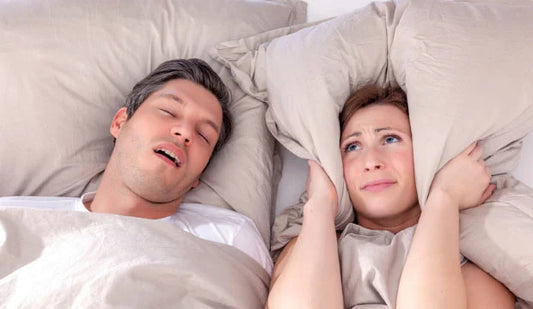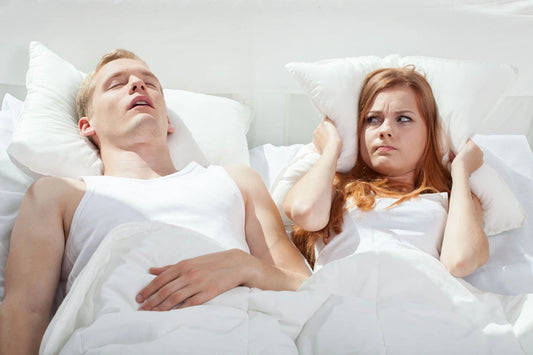An ordinary night's sleep involves between 4 and 6 sleep cycles, depending on whether you are a small or, on the contrary, a heavy sleeper.
Each sleep cycle lasts about 90 minutes, and during this time we go through 5 stages of sleep. The first four stages make up our slow-wave sleep, and the fifth stage is REM sleep.
- Slow-wave sleep: Through these four stages, we go from very light sleep at Stage 1, to very deep sleep at Stage 4. It is very difficult to wake a person who is in phase 4 of his sleep. During slow wave sleep we have low muscle activity and normally our eyes do not move. But all our muscles still retain their ability to function!
- REM Sleep: During this last stage of sleep, we have rapid eye movements. It is during this phase that most dreams occur. Our eyes don't move all the time, but they move up and down. These eye movements may be related to dream visions, but not necessarily. Even though our eyes are moving rapidly, other muscles seem to be paralyzed (but vital muscles, such as the heart, lungs and diaphragm, continue to function normally).
How long is a sleep cycle?
A sleep cycle lasts about 90 minutes, but the 5 phases that compose it are not of equal duration!
- The First Phase: This is the falling asleep phase, the transition between wakefulness and sleep. Sleep is light, muscle activity slows down, a few rare muscle contractions remain. This phase represents 5% of the total sleep cycle, and lasts about 4 to 5 minutes.
- The Second Phase: This is the confirmed sleep phase. Breathing and heart rate slow down, there is a slight decrease in body temperature. This phase represents 50% of the total sleep cycle, and lasts approximately 45 minutes.
- The Third Stage: This is the beginning of deep sleep. The brain slows down and begins to generate long, slow waves on the electroencephalogram. This phase represents 5% of the total sleep cycle, and lasts about 4 to 5 minutes.
- The Fourth Stage: This is the very deep sleep stage. The breathing is rhythmic, regular and deep, the muscular activity and almost zero, the brain produces slow waves. It is difficult, if not impossible, to wake the sleeper during this phase, which represents 15% of the total sleep cycle, and lasts about 10 to 15 minutes.
- The Fifth Stage: This is the phase of REM sleep. Eye movement is rapid, brain waves speed up, and dreams occur. Our muscles are relaxed, as if paralyzed. Only vital muscles (heart, lungs, diaphragm) function normally. Breathing is rapid and shallow. This phase represents 25% of the total sleep cycle, and lasts about 20 to 25 minutes.
The sleep cycle in newborns
From birth to about three months of age, newborns will have cycles" sleep - sleep" throughout the day, with slightly longer cycles at night. The length of these cycles depends on the child. Typically, baby will sleep for blocks of about 2 or 3 hours during the day, and blocks of 4 to 6 hours at night.

Just like adults, babies go through cycles different types of sleep, ranging from drowsy (restless sleep) to light sleep, then to deep sleep followed by REM sleep.
Between light sleep and deep sleep, there is a stage called quiet sleep, during which dreams can occur. It is during this phase that nightmares and sleepwalking occur in older children.
The deep sleep phase is much shorter in newborns than in adults.
Baby will go through this sleep cycle about 9 times a night. A cycle lasting between 50 minutes and 1 hour. This cycle length will gradually increase after three months of age until adulthood when it will reach 90 minutes.
The adolescent sleep cycle
In adolescents, sleep is very complicated. All the phases are shifted, upset, even non-existent for some!
The first of the disturbed phases is the alleviation of deep sleep. The bad habits of the adolescent put the rhythms of sleep - sleep to the test: school constraints, social pressure, outings, screens, poor lifestyle, friends, etc. Bedtime is shifted, sleep is lighter and difficulty falling asleep is greater.

As the duration of nocturnal sleep decreases while physiological needs increase, we are witnessing a chronic deficit in sleep. Hence the endless lie-ins on weekends and during the holidays! The phases of deep sleep diminishing, the paradoxical sleep being constant, the shift is all the more.
In order to compensate for all these discrepancies, adolescents feel the need to take naps during the day: it is during this period that daytime sleepiness and certain sleep pathologies such as hypersomnia, insomnia or phobias.
The adult sleep cycle
In adults who have no pathology and no particular sleep disorder, the sleep cycle takes place as seen above: a night made up of 4 to 6 sleep cycles of approximately 90 to 120 minutes. Each cycle comprising the 5 usual phases: phase falling asleep (I), confirmed sleep phase (II), onset of deep sleep (III), very deep sleep phase (IV) and REM sleep phase (V).
When these phases take place correctly and the cycles are complete, then we can say that the adult has the chance to have a real restorative sleep, especially if phase IV is respected.
But sometimes, sleep disorders occur for a wide variety of reasons: stress, fatigue, depression, alcohol, tobacco, medication, pathologies, phobias, snoring, apnea, brutalism, etc. At this time, the cycles are disturbed, irregular, or truncated. Some phases completely disappear, and sleep is then no longer restorative.
However, there are solutions adapted to each type of sleep disorder, in order to find the most regular cycles possible and an optimal capacity for recovery.
The sleep cycle in the elderly
With age, the quality of sleep changes due to aging. In seniors, if the cycles always last about 90 minutes, it is the type of sleep itself that changes: it becomes lighter and periods of intra-sleep awakenings appear. In addition to the quality, the rhythm also changes: falling asleep occurs earlier, and therefore waking up too. In addition, the need to take naps during the day is necessary to compensate for the poor quality of nighttime sleep.

Physical factors due to age intervene in the modification of sleep cycles: the reception of light is less good, the lack of physical exercise, the advance of phase, the causes of excessive insomnia ( change in lifestyle, pain, illnesses, medication, depression, snoring, apnea), etc.
It is therefore essential for the elderly to expose themselves to daylight more often, to maintain regular physical activity, to eat light meals in the evening, to regulate the temperature of the room, to avoid stimulants and medications,... in order to regain a truly restorative sleep rhythm.

- Choosing a selection results in a full page refresh.
- Opens in a new window.







